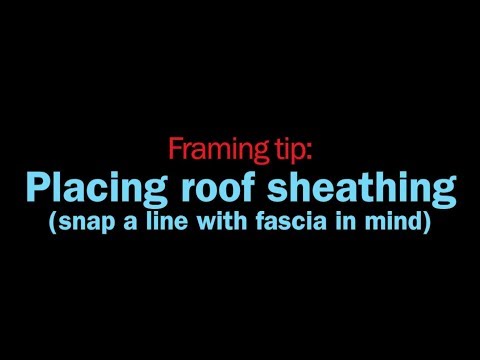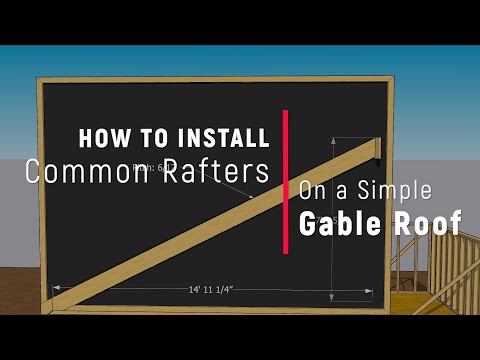A solid roof deck that won’t leak in storms begins with a piece of string. A line is snapped across the rafters to indicate the top of the first course of sheathing. Sometimes you have to install decking before the subfascia or fascia are installed, so you need to do some math to decide where to snap the line.
Ben Bogie, a remodeler in New England, describes how to calculate where to snap the line:
- He likes to keep the bottom edge of the roof sheathing above the outer edge of the fascia, in case there are little discrepancies in the framing so he marks a line about a quarter inch in from the outer edge of the fascia.
- Hold the 48-inch mark on your tape measure to the outer edge of the plywood and look to see where the end of the truss tail falls. It is at 45-3/4 in.
- Measure up the rafter 45-3/4 inch from the cut end of the truss tail and snap a line along the trusses. This indicates the upper edge of the first row of roof sheathing—leaving enough overhang that the subfascia and fascia will tuck neatly underneath when the time comes.
- If there were no subfascia yet, they’d hook the rafter tail and mark 45 - ¾
- And snap a line
For small roofs like this one, discrepancies between rafters do not have time to grow much, but on large roofs, they can push the layout off substantially. As soon as a sheet is in place, the panel is nailed off.
The bottom course is run along the line to keep the layout on track.
The roof deck aligns with the subfascia so that the sheathing can be sealed directly to the framing. In case the trim is damaged or broken off, the waterproof layer exists at the framing.
On a larger section of the roof, Julio Ortiz has a few obstacles. He says they’re going to snap a line at 48 inches, but with the pump jacks in the way, they’ll need to slide sheets under the hardware.
The first sheet will be placed so that it does not need to be cut and can secure the pump jacks. He checks the layout to find a way to provide at least half sheets at either end of the run and begins in the middle. When the sheet is on the line and centered on the rafters, they nail it.
Successive sheets are usually placed from above, out to the ends. Julio places three or four nails into the first corner to keep the sheet from moving.
On second-floor roofs, it is usually easier to move the cut station upstairs and push sheets up through the rafters. As they work their way to the end of the first run, we’ll take a break and be back soon with a look at the workflow to make filling the field fast and efficient.











